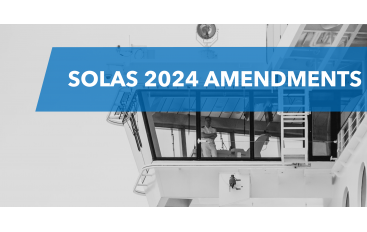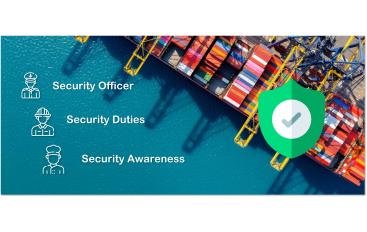SOLAS regulation, which says “…every crew member shall participate in at least one abandon ship drill and one fire drill every month…” is widely known. However, not every training with survival crafts is done monthly and to make it even more complicated there are certain variations on the lowering, launching and maneuvering frequencies depending on the type of ship’s equipment. This post idea is to bring some extra light on the subject of abandon ship drills.
How often abandon ship drill has to be carried out?
It is the very first question to ask, after asking “WHY they have to carried out?” Answer is easy. Because abandon ship is not something that happens to crew on a daily basis. Nevertheless, in the ocean there is no emergency service to come and save our lives. So crew has to know what and how to do, and not less important to be able to communicate efficiently and work as a team in case of emergency.
Frequency of drills itself is clearly stated in SOLAS Ch. III/19.3 Drills:
3.2 Every crew member shall participate in at least one abandon ship drill and one fire drill every month.
The drills of the crew shall take place within 24 h of the ship leaving a port if more than 25% of the crew have not participated in abandon ship and fire drills on board that particular ship in the previous month.
When a ship enters service for the first time, after modification of a major character or when a new crew is engaged, these drills shall be held before sailing.
On passenger ships, an abandon ship drill and fire drill shall take place weekly. The entire crew need not be involved in every drill, but each crew member must participate in an abandon ship drill and a fire drill each month as required in regulation 19.3.2. Passengers shall be strongly encouraged to attend these drills.
But that’s not all. According to SOLAS Ch. III/19.4 each crewmember “as soon as possible but not later than two weeks after joining the ship” has to be given an on-board training in the use of the ship's life-saving appliances, including survival craft equipment, and in the use of the ship's fire-extinguishing appliances. ALL the ship's life-saving and fire-extinguishing appliances shall be covered within any period of two months.
What if you work 4/4 or 5/5 weeks on the same ship? Then “such training shall be given not later than two weeks after the time of first joining the ship.”
What shall abandon ship drill include?
As per SOLAS Ch. III/19.3.4.1:
.1 summoning of passengers and crew to muster stations with the alarm required by regulation 6.4.2 (general alarm: 7 short and one prolonged blasts) followed by drill announcement on the public address or other communication system and ensuring that they are made aware of the order to abandon ship;
.2 reporting to stations and preparing for the duties described in the muster list;
.3 checking that passengers and crew are suitably dressed;
.4 checking that lifejackets are correctly donned;
.5 lowering of at least one lifeboat after any necessary preparation for launching;
.6 starting and operating the lifeboat engine;
.7 operation of davits used for launching liferafts;
.8 a mock search and rescue of passengers trapped in their staterooms; and
.9 instruction in the use of radio life-saving appliances;
a training in the use of the ship's life-saving appliances as described above;
3.4.9 Emergency lighting for mustering and abandonment shall be tested at each abandon ship drill.
What are the safety precautions for lifeboats lowering by means of falls?
First of all, there is a difference between lowering and launching of the boat. Lowering is actually means to bring the boat secured on hooks to about 1 meter above the water level and then to put it back in stowed position. Launching means further disconnection from the hooks and maneuvering. That’s why lowering by means of falls (!not a free fall) shall be done monthly. Launching, on the other hand, done as SOLAS Ch. III/19.3.4.3:
…each lifeboat shall be launched, and manoeuvred in the water by its assigned operating crew, at least once every three months during an abandon ship drill.
3.4.5 The Administration may allow ships operating on short international voyages not to launch the lifeboats on one side if their berthing arrangements in port and their trading patterns do not permit launching of lifeboats on that side. However, all such lifeboats shall be lowered at least once every three months and launched at least annually.
3.4.6 As far as is reasonable and practicable, rescue boats other than lifeboats which are also rescue boats, shall be launched each month with their assigned crew aboard and manoeuvred in the water. In all cases this requirement shall be complied with at least once every three months.
3.4.7 If lifeboat and rescue boat launching drills are carried out with the ship making headway, such drills shall, because of the dangers involved, be practised in sheltered waters only and under the supervision of an officer experienced in such drills.
There are also additional precautions mentioned in IMO MSC.1/Circ. 1578 Guidelines on safety during abandon ship drills using lifeboats:
1.5 Planning and organizing drills
1.5.4 The lowering of a boat with its full complement of persons is an example of an element of a drill that may, depending on the circumstances, involve an unnecessary risk. Such drills should only be carried out if special precautions are observed.
2.3 Lifeboats lowered by means of falls
2.3.2 When drills are to be performed with persons on board the lifeboat, it is recommended that the boat be lowered and recovered without any persons on board first to ascertain that the arrangement functions correctly. In this case, the boat should then be lowered into the water with only the number of persons on board necessary to operate the boat
2.3.3 To prevent lashings or gripes from getting entangled, proper release should be checked before swinging out the davit.
However, there is even further clarification, which is quite obscured, because you may not find a reference to it in SOLAS directly. IMO MSC.1/Circ. 1326 Clarification of SOLAS regulation III/19:
2 SOLAS regulation III/19.3.3.3 requires each lifeboat to be launched, and manoeuvred in the water by its assigned operating crew, at least once every three months during an abandon ship drill. However, the regulation, whilst requiring each lifeboat to be manoeuvred in the water by its assigned operating crew, does not require the assigned operating crew to be on board when the lifeboat is launched.
3 The Committee, therefore, agreed that the assigned operating crew should not be required to be on board lifeboats during launching, unless the master, within the authority conferred to him by paragraph 5.5 of the ISM Code, considered, taking into account all safety aspects, that the lifeboat should be launched with the assigned operating crew on board.
What are the regulations for free-fall lifeboats?
Certainly, the regulations for davit-launched lifeboats cannot apply to free fall lifeboats. In this case crew shall refer to SOLAS Ch. III/19.3.4.4:
… at least once every three months during an abandon ship drill the crew shall board the lifeboat, properly secure themselves in their seats and commence launch procedures up to but not including the actual release of the lifeboat (i.e., the release hook shall not be released).
The lifeboat shall then either be free-fall launched with only the required operating crew on board, or lowered into the water by means of the secondary means of launching with or without the operating crew on board. In both cases the lifeboat shall thereafter be manoeuvred in the water by the operating crew.
At intervals of not more than six months, the lifeboat shall either be launched by free-fall with only the operating crew on board, or simulated launching shall be carried out in accordance with the guidelines developed by the Organization.
As per latest IMO circular MSC.1-Circ.1578 simulated launching is a means of training the crew in the free-fall release procedure of free-fall lifeboats without the physical activation of release mechanism. The last statement means that you may never launch this kind of lifeboat by means of free fall.
Another thing to remember is the difference in use of lifejackets with different types of lifeboats. For the lifeboats launched by falls LSA code 4.4.2.1.1 states:
The number of persons which a lifeboat to be launched by falls shall be permitted to accommodate shall be equal to the lesser of the number of persons having an average mass of 75 kg …, all wearing lifejackets, that can be seated in a normal position without interfering with the means of propulsion or the operation of any of the lifeboat's equipment; or
Which literally means that you can embark a lifeboat in a rigid lifejacket. However, this is not the case of free fall lifeboats. In fact, launching a free fall lifeboat with crew in rigid lifejackets may lead to the worst possible consequences. A common practise is to use inflatable life vests or just to take rigid life jackets inside a free fall lifeboat without putting them on.
Is that all?
Not yet. If the vessel equipped with davit operated life rafts, there is one more thing to do as per SOLAS Ch. III/19.4.3:
On-board training in the use of davit-launched liferafts shall take place at intervals of not more than four months...
Whenever practicable this shall include the inflation and lowering of a liferaft. This liferaft may be a special liferaft intended for training purposes only, which is not part of the ship's life-saving equipment; such a special liferaft shall be conspicuously marked.
What are the time criteria for preparation and launching of survival crafts?
First of all lets refer to SOLAS Ch. III/13-14:
Each survival craft shall be stowed in a state of continuous readiness so that two crew members can carry out preparations for embarkation and launching in less than 5 min.
Additionally, Resolution A.1052(27) Procedures for port state control, APPENDIX 7 states:
Each survival craft should be stowed in a state of continuous readiness so that two crew members can carry out preparations for embarking and launching in less than five minutes.
On passenger ships, it is required that lifeboats and davit-launched liferafts are capable of being launched within a period of 30 min after all persons have been assembled with lifejackets donned.
On cargo ships, it is required that lifeboats and davit launched liferafts are capable of being launched within a period of 10 min.
Record keeping
All drills and trainings activities have to be duly recorded in the ship’s logbook. If the vessel has a deck logbook and an additional flag logbook, then all drills shall also be recorded in the later one as well. If a full muster, drill or training session is not held at the appointed time, an entry shall be made in the log-book stating the circumstances and the extent of the muster, drill or training session held.
Also details of drills shall be filled in company’s SMS drill reports. Details of any tests or malfunctions have to be reflected in ship’s PMS (preventive maintenance system).
Hopefully, this material provides you with more or less full scope of drills, trainings and launchings that have to be carried out with survival crafts on board.
To summarize, whatever the training requirement arise at the moment, occupational safety shall be always in the first place. Be safe!
Best regards,
Aleksandr Pipchenko
Useful links:
Extracts from SOLAS regarding drills and trainings frequency.
IMO MSC.1/Circ. 1578. Guidelines on safety during abandon ship drills using lifeboats, 2017









Comments